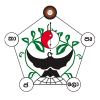Faculty of Complementary Medicines
Department of Homeopathy
Department of Homeopathy deals with a medical system that was developed in Germany more than 200 years ago. It’s based on two unconventional theories:
* “Like cures like”—the notion that a disease can be cured by a substance that produces similar symptoms in healthy people.
* “Law of minimum dose”—the notion that the lower the dose of the medication, the greater its effectiveness. Many homeopathic products are so diluted that no molecules of the original substance remain.
Homeopathic products come from plants (such as red onion, arnica [mountain herb], poison ivy, belladonna [deadly nightshade], and stinging nettle), minerals (such as white arsenic), or animals (such as crushed whole bees).
Many homeopathic remedies consist of substances that have been diluted many times in water until there's none, or almost none, of the original substance left.
Homeopathy is used to "treat" an extremely wide range of conditions, including physical conditions such as asthma and psychological conditions such as depression.
- Subjects Homoeopathic Philosophy (Part-I)
- Anatomy (Viva Voce)
- Pharmacy (Practical)
- Anatomy (Theory)
- Pharmacy (Theory)
- Materia Medica
- Subjects MateriaMedica
- Homoeopathic Philosophy
- Physiology
- MateriaMedica (Viva Voce)
- Hygiene Physiology (Practical)
- Subjects MateriaMedica
- Homoeopathic
- Philosophy
Pathology (Theory) - Psychology Materia (Viva Voce)
- Obstetrics & Gynaecology Physiology (Practical)
- Pathology (Viva)
- Subjects MateriaMedica (Theory)
- Case Taking & Repertorisation
- Forensic Medicine
- Homoeopathic Philosophy MateriaMedica (Viva Voce)
- Case Taking (Viva Voce)
- Minor Surgery
Academic Staff
Department of Homeopathy

Dr. Amila Jayasinghe
DA.SL, D.Ac., MACF,
PG Dip. in Buddhist Ayurveda Counselling,
MA - Buddhist Ayurveda Counselling,
MA - Buddhist Studies (University of Kelaniya)

Dr. G. Sathyamoorthi
Acupuncturist & Chief Trainer TCM

Dr. Wulakshi Wijekoon
MD( Russia) MD (A.M), Ph.D


